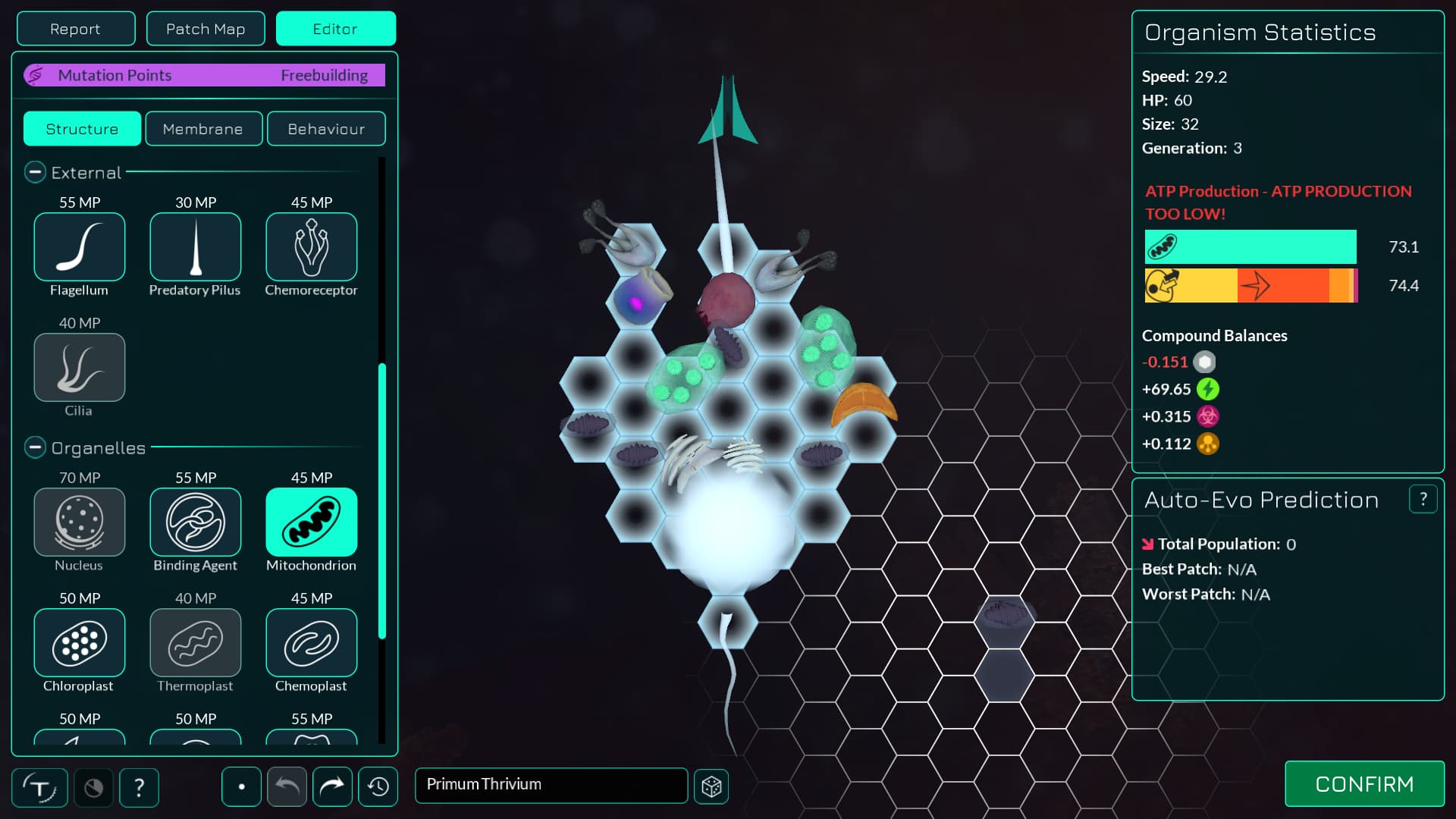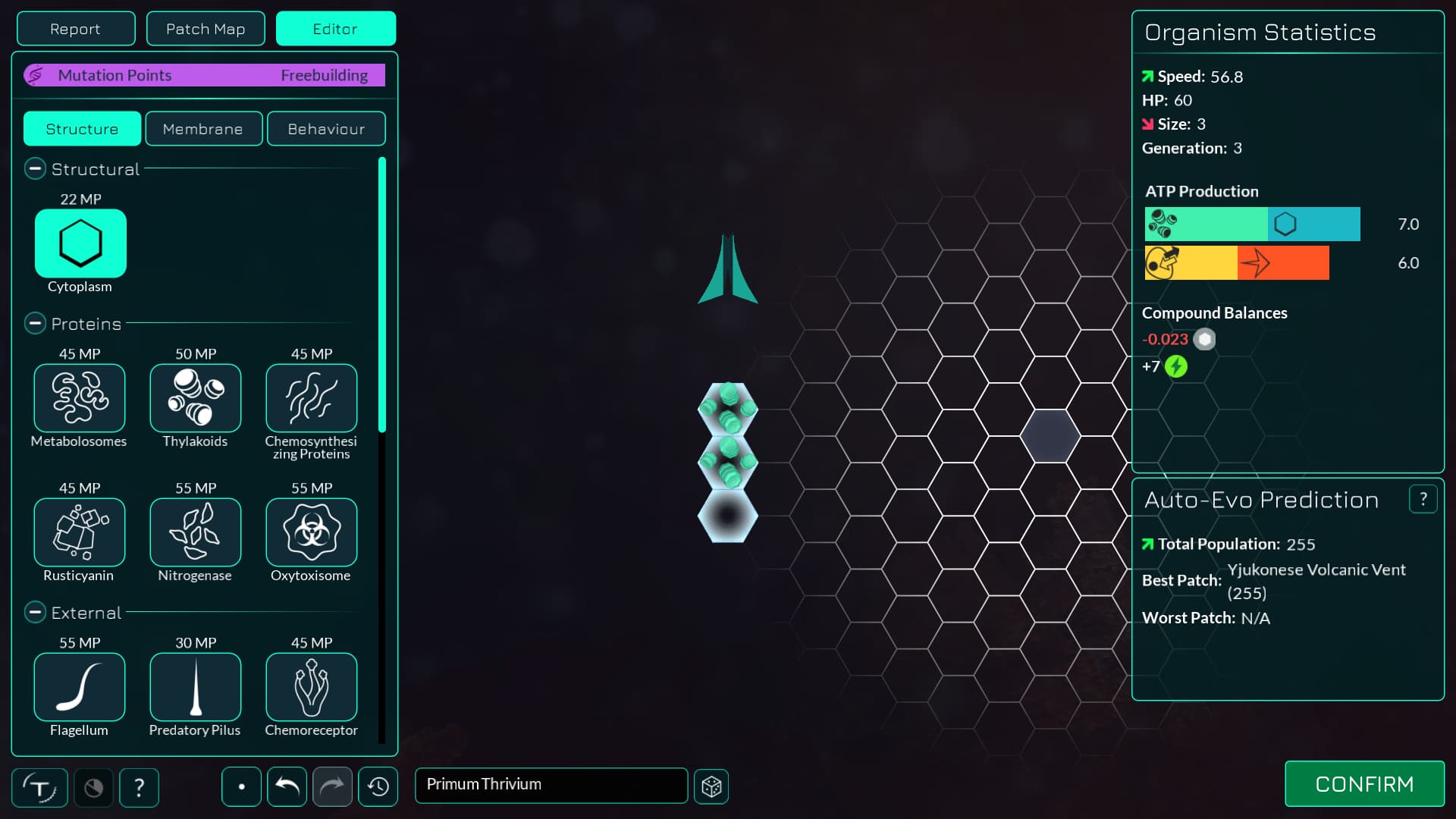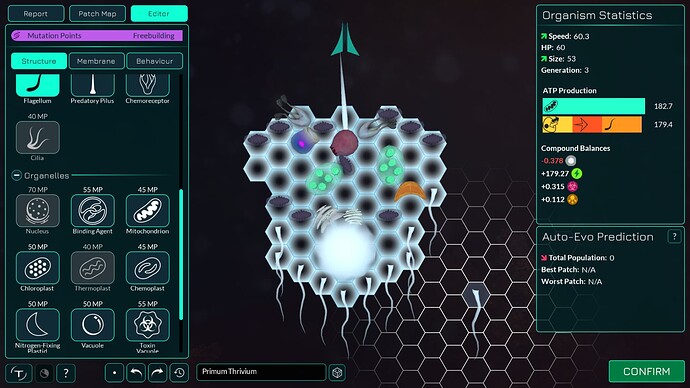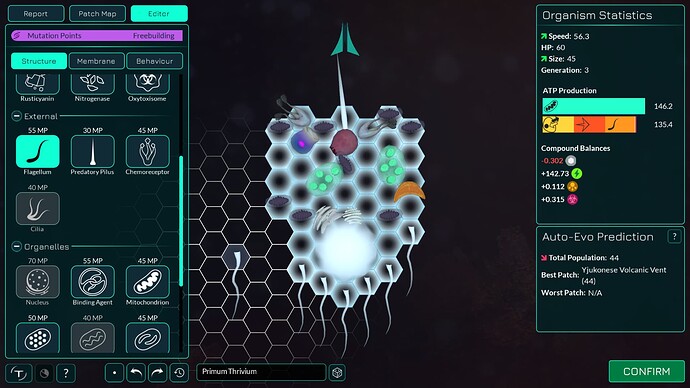Pursuant to Game Design Decisions in Bucky's Absence - #13 by hhyyrylainen, this is an experiment in setting up a voting thread on a specific gameplay concept that would be immediately actionable upon reaching a decision. I will open a poll for voting on Wednesday, leaving people plenty of time for freeform discussion even with the holiday. If anything is selected other than the “take no action” option, I’ll go ahead and make a PR to enact the change.
Today’s topic is: Flagella
Flagella are the organelle that provides speed and uses lots of ATP. The movement property of a flagella costs 7 ATP, whereas the next highest cost I can find is the oxitoxisome at 5. In exchange, the flagella speeds up the fastest microbe (1 hex, most flexible membrane) from 77 to 100 speed, and speeds up an example really big microbe I made from 18.6 to 29.2 speed. The fastest I could get this big cell was 60.3, at 10 flagella which seems to be the max bonus (I haven’t checked the code in detail)

To be fast enough to catch this example prey cell (a pretty common design for auto-evo to come up with), I still needed six flagella, and would then need to drop some other organelle.

Players have complained that this isn’t enough bang for your buck, although a lot of these comments are also talking about colonies, which might be beyond the purview of what we are balancing for. I have not made an attempt to hone in on whether the issue is that the player feels like each flagella is underpowered, or if it feels like it takes too long to add enough flagella to get to a speedy build.
I also feel that there’s a more subtle issue, which is that the ATP cost might be prohibitive for the auto-evo to ever develop species that make use of flagella. Essentially the issue is that you need 9 surplus ATP for a flagella to not make you ATP negative as a random mutation, and that’s not likely to happen until the cell is very big or the species just happens to have been holding on to a metabolosome by chance as a useless mutation.
There is one important caveat to this, which that the auto-evo should already have a scotch tape solution to this, which is essentially to just incentivize excess ATP in predatory species in hopes of making an intermediate form. This doesn’t seem to have panned out, but Buckly and Maxonovian’s branch for fixing auto-evo may make it start working (I will skip details of the bugfix as I don’t think it’s important here). Obviously not ideal anyway, but it’s possible that we can keep the high ATP cost and still start seeing AI species with flagella.
I propose three options to start with, but if people want to add anything concrete I will add them to the vote. Exact numbers would be up for adjustment when actually testing the PR of course, but I wanted to be specific so we’re all talking about the same thing.
- Take no action
- Up the moment force by 40%. This makes the big cell example able to catch the prey at only about 3 flagella, but it makes the minimum possible cell go at an incredible 110
- Drop the FLAGELLA_ENERGY_COST constant from 7 to 4. This results in the big cell only need 5 flagella to be fast enough to catch the prey cell, without making the minimum cell absurdly fast. I think this would also help auto-evo, but I haven’t tested that.

